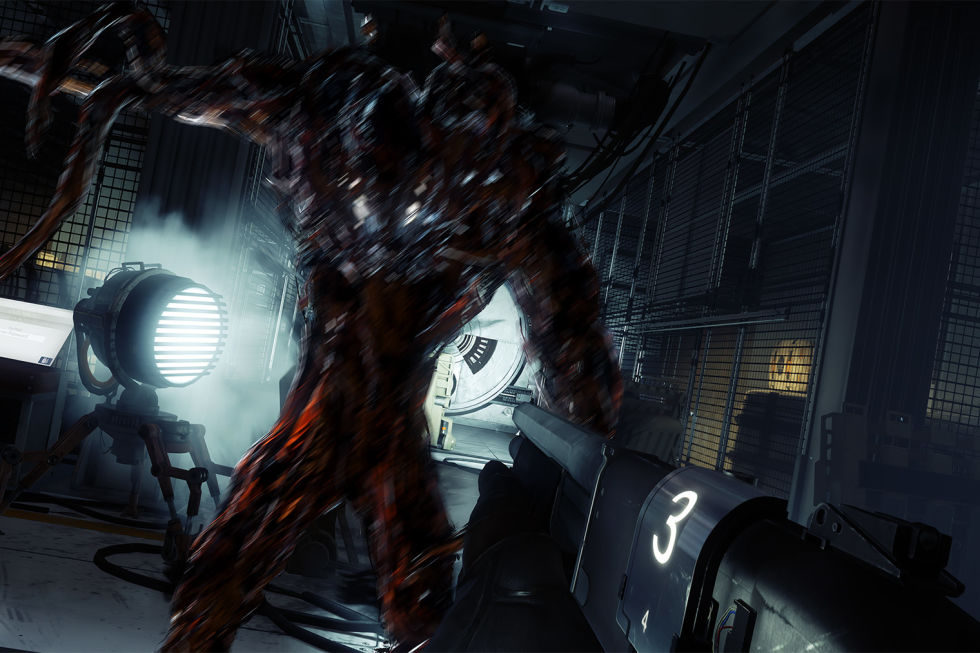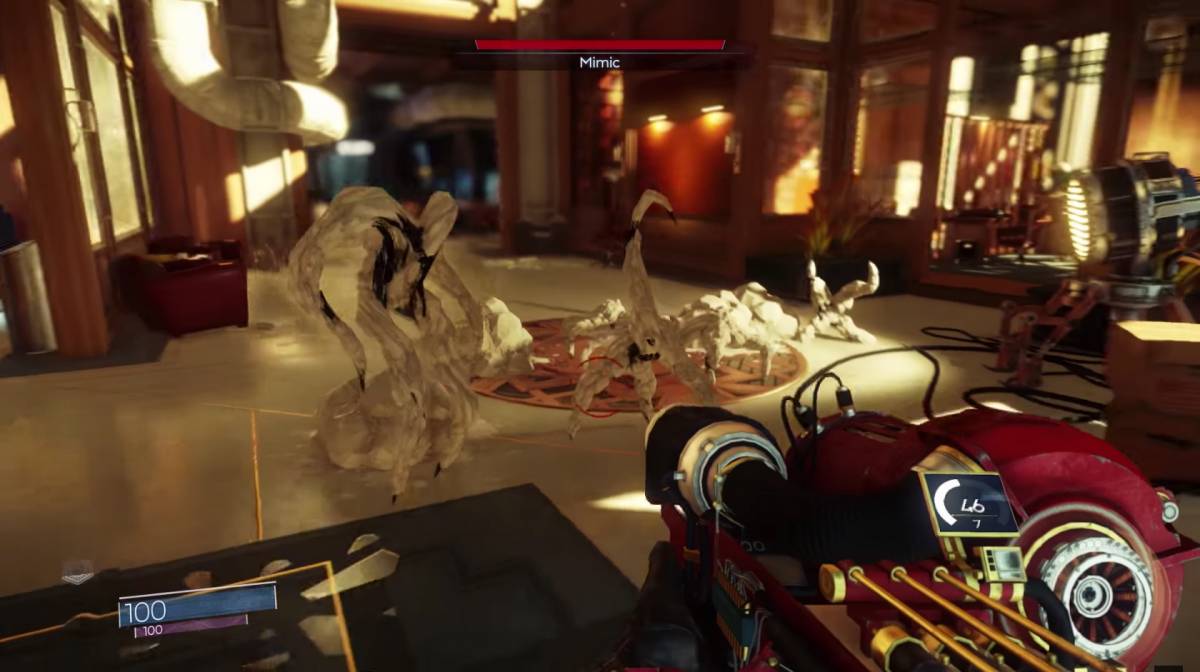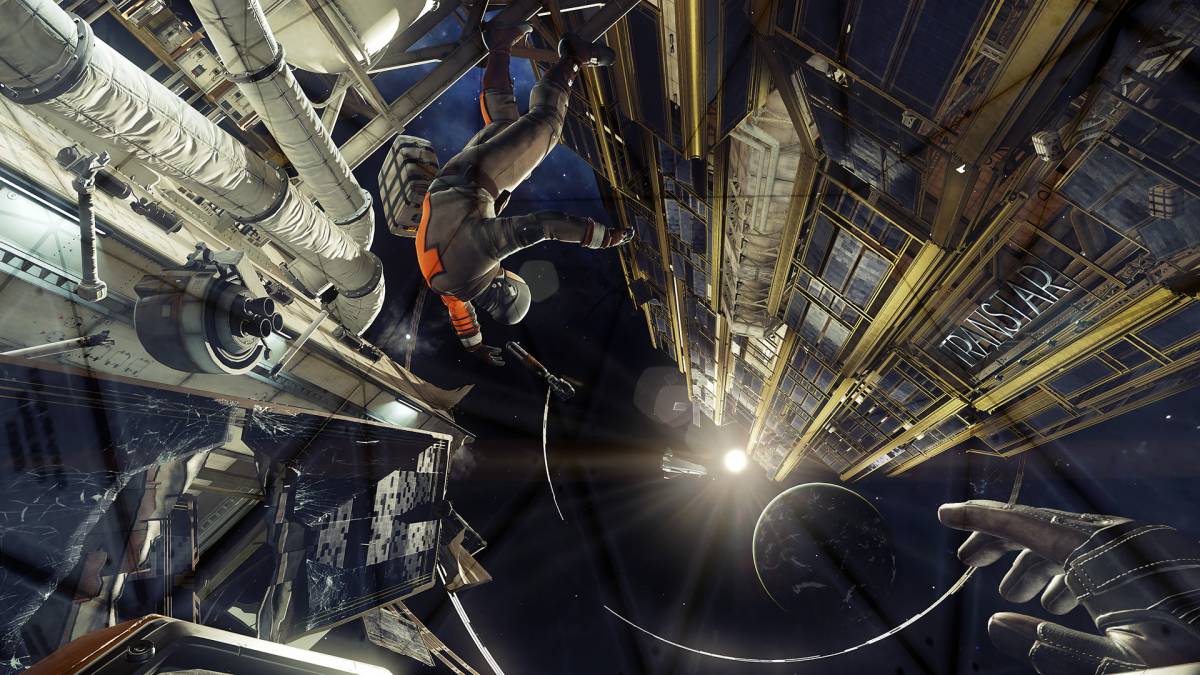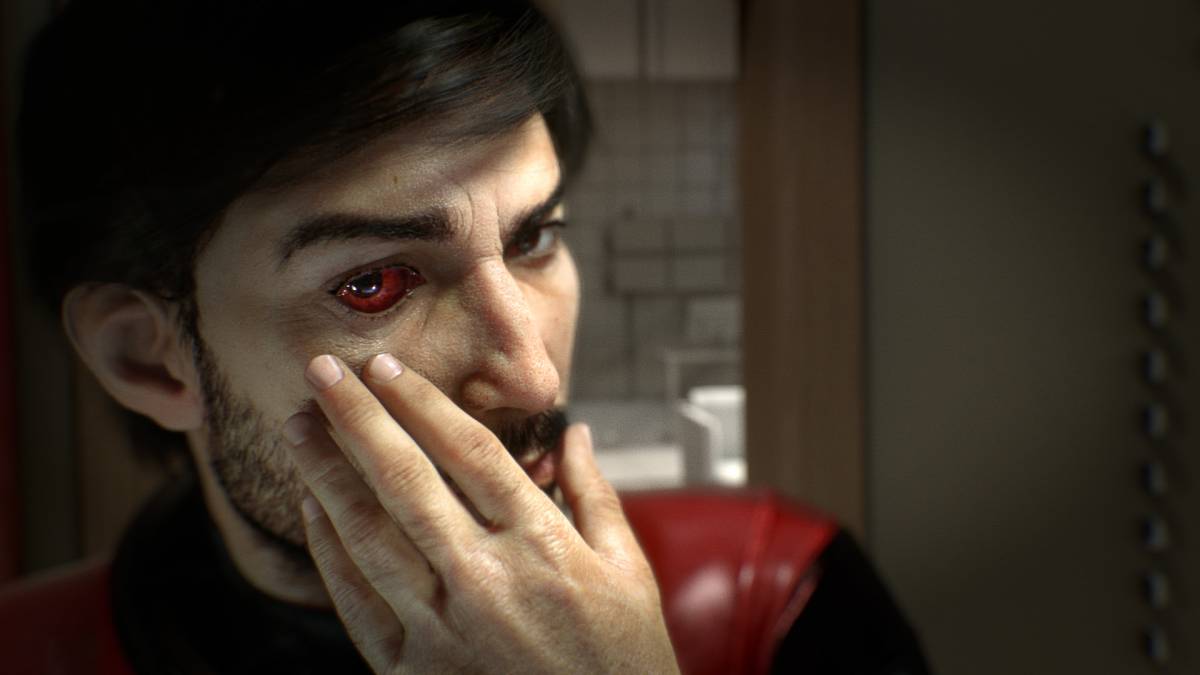Note: I will be discussing very little of the story of this game except vague references to back up my opinion or description. Sorry if maddening vagueness annoys you.
Prey (the newest release from Arkane and Bethesda, not the 2006 one just so we’re clear) is not what I expected. To be quite honest, I don’t quite know exactly what I expected, but it wasn’t exactly this.
Many were cautious or skeptical after the demo, which I did not get the chance to play through due to other commitments. I can now see why, because Prey’s opening is a mixed bag.
The first chapter of the game succeeds marvelously at introducing you to one of its core themes and gameplay tenets – paranoia. A discovery within the first 15 minutes (one which I actually saw clues to immediately, which was neat) kickstarts your tumble down the rabbit hole of black-smoke monsters, goo guns and copious amounts of rummaging through detritus.
Talos I, the space station on which the entire game takes place, is every bit as fleshed-out and immersive as the cities of Arkane’s flagship Dishonored series. Sticky notes, audio logs, bodies, gore, debris and so much more are placed with such care and attention to detail and, more importantly, purpose that you can’t help but feel like you’re really floating between the Earth and its moon, alone with your thoughts, your wrench and an unknown number of your closest Typhon alien pals.

Well, not exactly alone. There are still survivors aboard, though most are, surprisingly, found in logical places, hunkered down in places that seem plausibly survivable and isolated. That or they’re folks you rescue from the Telepaths that love to turn them into exploding meat-puppets by lovingly encasing them with your GLOO Gun before tasing them into unconsciousness. These encounters with other folks so far have done little to dispel the (welcome) feeling of desolation and isolation – Talos I is in bad shape, and your main objective is not about to make it any better.
I really have to dance around here, because I do believe the story and atmosphere is best experienced first hand. What I will say is that, as can be expected, there is an AI companion of sorts, as well as multiple individuals who talk at you, but the identities, origins and positions of these people coupled with the way the game continually paints everyone and everything – even the station itself – as unreliable really makes you feel like you don’t know who to trust. In a post-BioShock world, that may be a bit easier, but I’m finding it hard to think about this from a trope/metagaming perspective because the writing (thank you Chris Avellone) and delivery of the lines does such a great job of giving you pause in-universe. Again, without giving too much away, the game even has me questioning my own character’s plan.
That’s all I’m saying for the story – again, it really needs to be experienced cold. To get reductive, picture the atmosphere, aesthetic and tone of Dishonored and BioShock mashed together, then put them on a space station with some System Shock sprinkled in for good effect.

As we’ve detailed before here, Prey equips the player with an eclectic selection of mostly-unusual gadgets and weapons. Talos I is a research installation, after all, not a military base. Aside from an integrally-suppressed handgun and a good ol’ fashioned shotgun, every weapon in my inventory is of the unorthodox variety. There’s a laser weapon that, rather than taking down an enemy’s health, covers it over with a green bar. When the green bar overtakes their health, they explode instantly – getting the bar halfway and then damaging them until the green is all that remains is a valid and fun tactic that saves ammo for all tools involved.
Perhaps my favorite tool, perhaps not in overall usage time but definitely in style and pure concept, is the “Huntress Boltcaster,” a toy crossbow that shoots squeaky foam darts. What seems like a joke at first is actually an incredibly useful tool, for two reasons – the squeaks attract enemies and, my personal favorite, the darts can activate buttons and the touch screen controls of computers. At one point I broke into a room with lots of goodies in it by positioning myself just right to shoot through the small port in the unbreakable glass, with a view of the door controls on the computer. Of course, it took me about ten minutes to get the exact right positioning and angle for the fat darts to not hit something else on the way, each impact and bounce accompanied by a “squeeaaak” as the projectiles bounced through the air.
When I finally entered the room triumphant, I spent a minute walking around picking up all the missed shots, stepping on the squeaky darts as well as the dead guy inside repeatedly as I chased them around the room. Pure black comedy, this moment was when I knew this game was something special.

The dart gun is just one example of the myriad ways that navigation and puzzle solving are left up to the player. Between the gadgets, enhanced human and alien powers, I have never found myself frustrated or stuck – Prey is the kind of game where the answer to the question of “Will this work?” is almost always yes. On the topic of these “powers,” I must admit that I’m trying to due a “semi-pure” run; I am at this moment just below the threshold of alien DNA levels (the only way to get their abilities is through using their DNA) for the turrets to start thinking I’m an alien, and I’m quite partial to the turrets. They’re my only companions in the dark depths of Talos I, and I’d like them to not try to kill me. I can only hope the abilities I have chosen so far and the human abilities I continue to enhance will suffice – I cannot promise I will not succumb to the temptation of greater power, despite that very same temptation and hubris being the reason for the disaster.
As I reflect on the past few days of play, four major things stand out to me as negatives. The first that comes to mind is my disdain for the combat – it’s at its most fun when you use the environment to lay traps or soften up enemies with powers. The attacks themselves, especially the guns, feel underpowered and dull. You can upgrade the damage on the weapons, sure, but the feedback from firing a weapon or hitting a shimmering, roaring monstrosity is minimal, and when you’re damaged or otherwise affected by enemy attacks the interface becomes chaotic and confusing. Numbers fly out of enemies Borderlands-style to indicate damage, and I think an actually noticeable particle effect and physical reaction from a struck target would go a lot further – the rare occasions where a shotgun blast knocks them over is an example.
This lack of sufficient feedback for damage and effect on target both incoming and outgoing makes combat frustrating at times, dissuading you from fighting up close despite one of your primary damage-dealers being a shotgun and most of the common enemies being the teleporting Phantoms. Weapons like the GLOO Gun (which can encase and immobilize organisms, put out fires and act as a navigation tool by creating platforms), Disruptor stun gun and the aforementioned laser are flashier and much more gratifying to use, but they are extremely situational – the pistol is your only long-ish range option (so far), and between the fact that it is silenced and that it isn’t terribly powerful or impactful, you’re gonna be doing a lot of “shoot until the numbers stop flying out and they shrivel up.”

A mixture of stealth, setting up traps and outright avoidance seems to be the intended way to play here, once again recalling a problem I’ve had with Dishonored in the past where getting into a prolonged fight almost feels like you’re playing wrong. That’s not a good thing to feel in a game that is supposed to be open to player choice.
Another disappointing thing is the nature of the Mimics. At first a paranoia-inducing nightmare, these creatures, which can perfectly imitate any piece of small scenery in order to ambush you, are hugely overused in the opening segments to the point where I rapidly became annoyed rather unnerved. The first hour or so of whacking everything in the room with my wrench like a nervous wreck and carefully counting out the ratio of chairs to desks to see which ones didn’t belong devolved into me just bolting through rooms to aggro the things and keep going while they hid again.
The problem with the Mimics is that, while there are many situations where a sharp eye can detect what doesn’t belong, there are even more where there is no feasible way to detect them without giving them a free hit on you (and they hurt pretty bad on Normal when you’re starting out). If you don’t see them morph or see something fall over, and there aren’t any obvious standouts (i.e. two chairs at one desk, two trash barrels right next to each other with one fallen over), there is absolutely no way to tell until you either damage or aggro it.

Now, I want to be crystal clear – there are definitely some fun moments and scares with the Mimics, and I love the concept to death. The first time a health kit turned into a giant tentacle crab monster and jumped at me, my heart skipped about 10 beats and I laughed my ass off, and the dilemma of whether to waste health, stamina and ammo checking every household object is enjoyable…for a time. When you just want to get to the rest of the game, though, two hours of nothing but Mimics gets old fast. On top of that, you eventually find a helmet and a mod for it in the same room that sniffs out Mimics immediately. Scan every room you enter quickly with your scanner view and you’ll seldom be surprised by them again, unless they run in from somewhere else on a trigger when you pick something up or cross a threshold.
My third gripe is the most minor of the three, and has to do with the side questing. Sidequests in Prey are seldom simple affairs – the first place a new one sends you is almost always never the last. I won’t know until I finish, but this game feels to me honestly like it would benefit from tighter direction. I don’t think a wholly-linear approach would work, but the amount of sidequests I have that want me to go all over the station are a bit much, especially when I know that most of them are going to go, “ok, you went here, now go across the station to here!” I’m trying to do at least a decent number of them for the review, but it feels like a waste of my time on top of all of the methodical skulking and item-searching I feel I have to do to make sure I’m well-prepared.
Fourth and perhaps the most egregious is that music is…intrusive, to say the least. Scare cords and tension-building pieces play at weird, inappropriate times – zones that I’m positive are completely clear of enemies will still blast a bombastic soundtrack as I comb through for recyclables and ammo. It’s obnoxious and more importantly misleading, and not in the calculated, immersive way the rest of the game causes you to question yourself and everything around. I turned the music way down and eventually off, and the game has been much better since as I can listen for the chirps, chitters and mumbles of the various Typhon creatures and take in the wonderful ambient sounds.
Still, it is a crime against the arts that this game made me turn off a Mick Gordon soundtrack.
My thoughts on Prey right now boil down to this: it’s less of a shooter than you probably think, and much more of a story-driven stealth-action survival-horror game. What it lacks in pure thrills and visceral combat it more than makes up for in oppressive, immersive world-building and atmosphere and a paranoia-inducing, well-paced mystery – you know, well-paced when it isn’t sending you backtracking for keycards.
Prey is not what I expected, and so far, that’s just fine for the most part.
Expect my full review later this week.
Some of the coverage you find on Cultured Vultures contains affiliate links, which provide us with small commissions based on purchases made from visiting our site. We cover gaming news, movie reviews, wrestling and much more.



